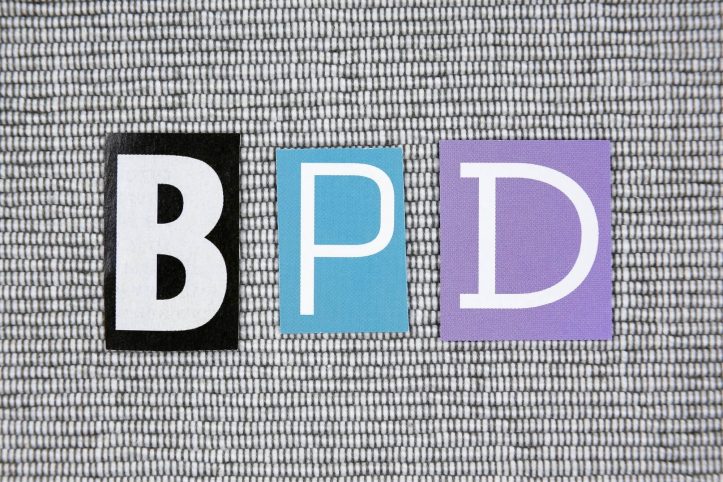Today, we want to take a closer look at Borderline Personality Disorder (BPD) and what this condition really is. Within this guest article, hope to start separating the truth from the fiction by defining what BPD really is and how it’s diagnosed.
What is Borderline Personality Disorder (BPD)? Borderline Personality Disorder is a mental disorder that is characterized by severe emotional pain, intense feelings of shame and guilt, and a persistent inability to control oneself. As these behaviors are so common within the sufferer’s life, they are often misdiagnosed as depression or anxiety. Because of this, many who suffer with BPD are incorrectly treated by psychiatrists, who offer little help and often label them as depressed or anxious when they could be suffering from a psychiatric disorder.

Borderline Personality Disorder is a disorder that is emotionally intense and causes individuals to have intense feelings of shame and guilt that come from a deep inner void. When suffering from BPD, individuals experience constant feelings of emotional exhaustion and extreme pain that often comes from feelings of worthlessness and abandonment. Often, these individuals also experience physical symptoms of emotional trauma that include stomach pain, nausea, headaches, and an upset stomach. When left untreated, these symptoms can worsen, resulting in further health complications and an increasing sense of emotional pain.
The causes of BPD are not clearly understood, however, it has been noted that those who suffer from this disorder are often depressed, experience significant emotional pain, and engage in destructive behavior such as self-harm and suicide attempts. There is no evidence to support the theory that BPD directly results in suicide attempts or suicidal thoughts or actions. What is known is that those who suffer from BPD often engage in self-harm and suicidal behaviors as a way to try to end the pain and stress associated with their BPD. For this reason, those who suffer from BPD are also advised to seek treatment. Unfortunately, many individuals who suffer from BPD do not receive treatment, and their behaviors become habitual and uncontrollable.
One method used to treat individuals with BPD is to observe and record the individual’s reactions to stress, which is called the Trait Antipsychotic Test (TAT). This diagnostic test is widely used to identify negative behaviors, and mood swings, as well as behaviors and mood swings that may be indicative of self-harm and suicidal thoughts and intentions. In the past, those who suffered from BPD had to wait for their psychiatrist to prescribe medications that were specifically designed to treat this disorder. Today, however, several online sources are available that offer a free online assessment of emotional reactivity, including TAT. If you believe that you may be experiencing symptoms of BPD, then you can take a test for BPD right online today.
Another effective way to treat BPD patients is through cognitive behavioral therapy. This form of treatment will help individuals suffering from BPD overcome patterns of distorted thought processes, identify, and replace negative beliefs with realistic, positive beliefs, and learn how to make decisions that are in line with their values and feelings rather than those that are forced upon them by others. If you have experienced an earlier diagnosis of BPD, you may be eligible for treatment through this therapy.
Of course, there are ongoing psychiatric studies being conducted around the world that are examining the possibility of BPD as a real disorder. Many psychiatrists are reporting that BPD patients respond better to medicinal treatments compared to those with a diagnosis of other forms of personality disorders. There is also a growing body of work that suggests that there are genetic or environmental factors that contribute to an increased likelihood of having a BPD diagnosis. For individuals who think they may have BPD, however, it is always important to visit a licensed psychiatrist with experience in treating borderline personality disorder to discuss your symptoms and possible treatment options. Because there is currently not one specific medical treatment for BPD, the best course of action for someone who thinks they have it is to work on improving their overall mental health.
If you believe that you are a victim of BPD, there are a number of things you can do to get treatment for your disorder. If you have experienced a history of violent behavior, sexual abuse, or emotional instability at any point in your life, you should consider receiving treatment for BPD at a professional clinic or mental health facility. If you suffer from severe abandonment issues, you should consider a hospitalization option if your symptoms require emergency hospitalization. In addition to seeking treatment for BPD, you should also consider seeing a psychiatrist who specializes in the disorder if you think you may be suffering from depression, substance abuse problems, or anxiety. These are the most common conditions that are associated with BPD symptoms.
What is BPD? Is a common question among sufferers. Although BPD does not mean that a person has a personality disorder, it does describe behaviors that are characteristic of an emotionally unstable relationship characterized by impulse control, lack of self-discipline, and severe manipulation of others. When looking for information about what is BPD, you should not look to the Diagnostic and Statistical Manual of Mental Disorders (DSM), which classifies the disorder based on diagnostic criterion. Rather, you should turn to qualified professionals such as therapists, police officers, licensed social workers, and forensic psychiatrists, who will examine your childhood experiences and relationships to determine if you are experiencing abnormal behaviors related to your emotions. Once you know for sure that BPD is present, you can take steps towards healing and recovery.